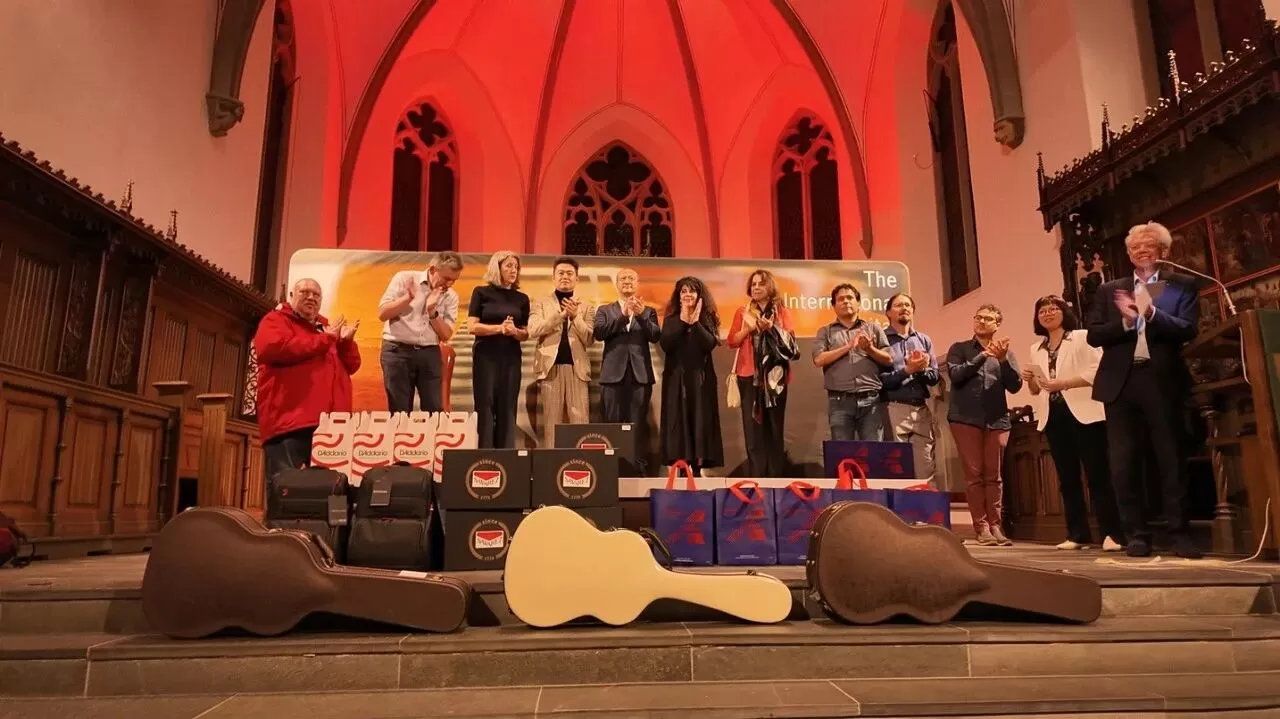The Complete Guide to the Types of Guitar Strings
Guitar strings are more complex than people think. Though many people believe all guitar strings to be the same, the fact is that the strings are different and of various types. There are hundreds of strings in the market with unique sounds and textures.
Strings are the connection between your fingers and the guitar. A different set of strings will completely change the sound of your playing. Choosing the right type of guitar string is the key to making the perfect performance.
In this article, we will mainly discuss the component of the guitar string and the types of guitar strings with the example of three types of guitar (acoustic, electric, and classical guitar).

Introduction to Guitar Strings: Components
To understand the different types of guitar strings, we need to learn about their basic consisting parts.
1. String core
The hexagonal core is a feature of modern guitar strings. The hexagonal shapes provide a solid base with cost-effectiveness. You can find the traditional round-core guitar strings in some rare cases. The cost of a round core guitar string is more expensive than a hexagonal core one. Some jazz guitarists prefer the traditional round core guitar strings.
2. String winding
Winding is the thin wire wrapped around the string core and the main contact point from fingers to strings. Roundwounds are the most common and popular type of winding. The roundwounds are known for their clear tones, suitable for genres such as Pop, Rock, and Blues. The other type of winding is flatwounds adopted for traditional jazz tones. Flatwounds make a more mellow and softer sound.
3. Coatings
Coatings are the extra layer of protection to prolong the lifespan of a guitar string. The coating protects the strings from damage like finger oils, salty air, humidity, and various external agents.
Types of Guitar Strings
l Acoustic guitar string
When you play an acoustic guitar, the tone is determined by way of resonating with a guitar. Unlike the electric guitar, the acoustic guitar has no magnetic pickups. Due to this reason, choosing the types of guitar strings will have a big effect on the overall sound.
Acoustic guitar strings are made up of steel cores. Hence, the acoustic guitar string is called “steel-string acoustic.” The biggest variation is the types of metal they have on their outer layers.
1. 80/20 bronze
80/20 bronze strings consist of 80% copper and 20% zinc. Since bronze is an alloy of copper and zinc, “brass” is the more accurate term. Tonally, 80/20 bronze guitar strings provide a bright, sparkling tone. Unfortunately, 80/20 bronze strings oxidize relatively quickly. Due to the circumstance, the guitar string needs to be changed frequently.
2. Phosphor bronze
In general, phosphor bronze strings consist of copper with 8–10% tin and a small percentage of phosphorus. Sometimes, phosphor bronze is called 92/8 bronze. The components make the string warmer and mellower than 80/20 bronze, with more emphasis on the mid-range. Phosphor bronze string is also corrosion-resistant and maintains the guitar string with a “new string” sound.
l Electric guitar string
The pickups of electric guitars capture the vibrations of metal strings, convert the vibrations into an electrical signal, and transmit it to an amplifier. The most common electric guitar strings in the market are made up of steel or nickel.
The typically electric guitar string can be divided into three types:
1. Nickel-plated steel
Nickel-plated steel string is the most popular electric guitar string on the market, with various sizes and numbers of strings. Most electric guitars are made with steel cores and nickel-plated steel wrap wire. Nickel-plated steel is resistant to corrosion and has a reasonably bright tone make it suitable for a band mix.
2. Pure nickel
Pure nickel electric guitar strings are made up of 100% nickel wrap wire. The material produces a warmer and creamier sound than other strings. Pure nickel strings have a softer attack and can cut the sharp treble tones of certain electric guitars in the bridge pickup position. The strings are favored by guitarists who prefer a mellow or vintage-sounding tone.
3. Stainless steel
The stainless steel strings last longer than most types of guitar strings. Due to their natural resistance to corrosion, this type of guitar string is ideal for players who have sweaty fingers. Stainless steel strings produce less finger squeak when you slide hands up and down the guitar neck.
l Classical guitar string
Before the 1940s, Classical guitar strings were made from animal intestines. Nylon guitar strings were available in the market in 1948. Nowadays, classical guitar strings are made of nylon and nylon wound with wire.
In general, the material used for the treble strings (bottom E, B, and G in standard tuning) is different than that used for the bass strings (top E, A, and D).
Treble Strings
Most strings are made from the materials below:
1. Clear nylon: Clear nylon is the most common material for treble nylon strings. Clear nylon provides a perfect balance of brightness and warmth in tone. The material is known for sustaining qualities and vibrato.
2. Black nylon: Black nylon produces a warmer, more mellow sound in tone than clear nylon. This type of guitar string is a popular choice for folk music.
3. Titanium: Titanium produces a brighter, crisper sound. Strings made with titanium are suitable for darker-sounding guitars. The titanium also has good sustain and easy vibrato.
4. Carbon Fibre: Guitar strings made using carbon produce a loud sound with a short sustain. The sound can change from bright to a more thin or harsh sound.
5. Composite: Composite material produces a very bright sound with strong projection. The material is often used for G strings to make a smoother transition between the treble and bass strings.
Bass Strings
The bass strings tend to be made from a multi-filament nylon core and a metal wrap. The most common winding materials are:
6. Bronze: Bronze winding is composed of 80% copper and 20% zinc. Bronze is also known as 80/20 bronze, brass, or gold. This type of guitar string produces a bright sound with good sustain.
7. Silver: Silver winding is typically made of copper with a silver coating. The silver-coated winding has a smooth texture and warm tone.
How Alice Strings can help you

Alice Strings was established in 1999 and over the years became one of the most influential musical instrument strings manufacturers around the globe.
We are a technology-oriented enterprise integrated with research, development, manufacturing, and sales, with over 50 invention patents.
Currently, Alice Strings supplies more than 2000 diverse range products: mainly classical guitar strings, acoustic guitar strings, electric guitar strings, bass strings, etc.
If you are looking for a reliable supplier, contact us!
Relate News


Introducing Alice Strings: Elevating the Art of Sound with Premium Instrument Strings

Everything You Should Know about an 8-String Mandolin

Daniele Defranis Visited Alice for Feeling the Best Classical Guitar Strings

Guitar Strings Guide: Everything You Need to Know

Music China 2019 | Alice Strings Attended The Show Flawlessly, and we look forward to seeing you again next year!

从中国走向世界,Alice琴弦倾情赞助第33届德国伊瑟隆国际吉他艺术节!

以弦为媒,连接世界!Alice&Winner琴弦助力第八届秦岭国际吉他艺术节

Alice&Winner琴弦闪耀2025上海国际吉他艺术节,共筑音乐梦想!

Let the world listen to the music of China | Guangzhou Romance attended the Music China 2019 with Alice strings

We attended the 16th Music Guangzhou (2019)

























